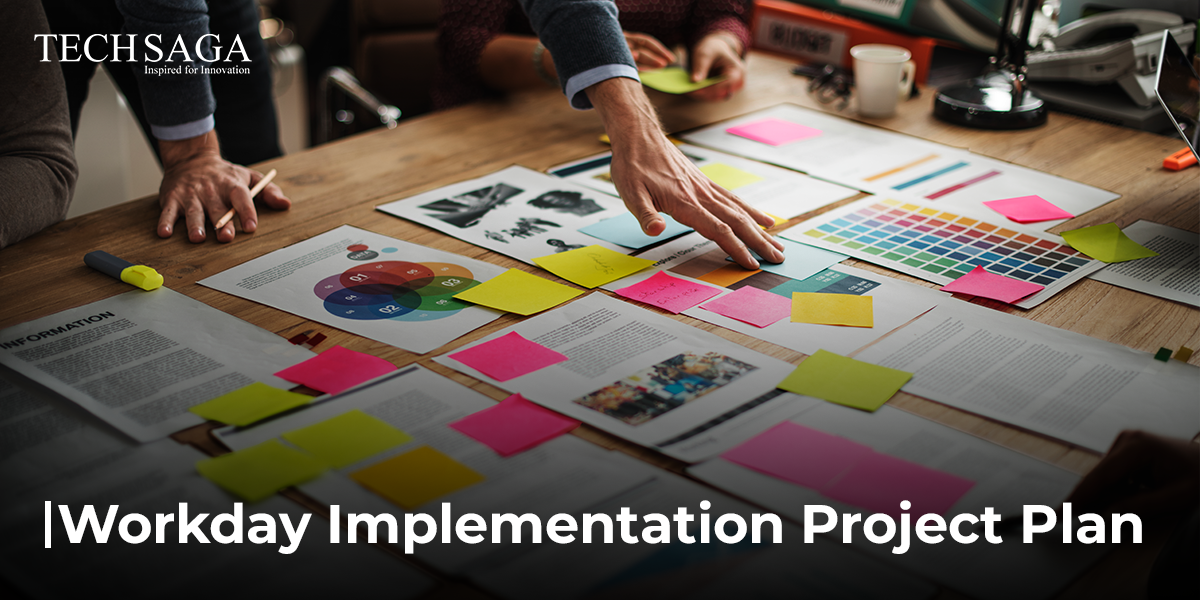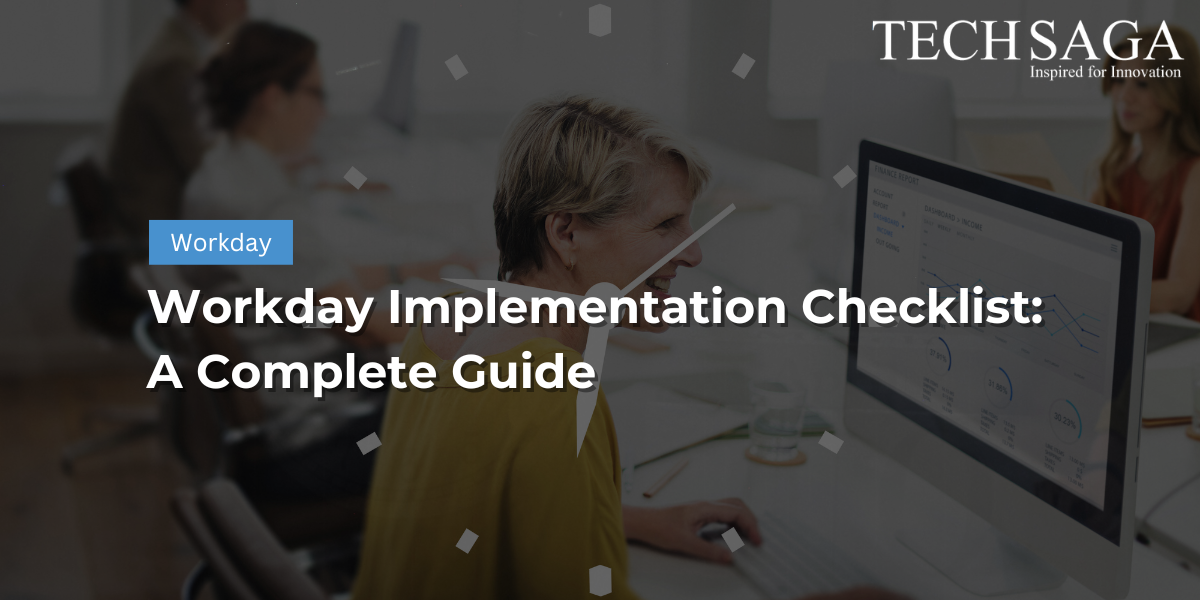Techsaga USA
Get valuable insights and stay updated on our interesting Techsaga US blog. We are experts in the world of IT consulting and IT support.
Workday Implementation Project Plan
Businesses considering Workday Implementation for the first time or looking to expand existing systems do it to make their operations smoother, improve HR functions, and find better ways to use Workday across different teams. Let me help you maximize your investment in Workday Implementation and how our team of Workday experts can help your organization. Keep reading.
What is Workday Implementation in Brief?
Workday implementation teams have the option to set up all the Workday applications, like Human Capital Management (HCM), Financial Management, Recruiting, Time Tracking, and Payroll. Alternatively, they can introduce just one module or a few applications based on what’s needed. When introducing new Workday modules, apps, or tools across your company, it’s crucial to create a clear deployment plan with multiple phases to ensure success.
Key Phase of the Workday:
Let’s check out the key steps in the Workday implementation process:
Plan-
During the planning phase, your company gets ready by:
Firstly, it goes through pre-implementation checklists and requirements. Then, it sets achievable goals for the deployment and creates a timeline and budget for the project. Additionally, it puts together a team to help with the transition.
Furthermore, planning involves making a strategy for managing change. This ensures that your team and the whole organization are ready for any changes that come with the new software. This can involve dealing with leadership changes, managing payroll and benefits, handling communication problems, and more.
Architect-
In the architect phase, your Workday project team starts building the foundation of your Workday system using a clear framework and setting up your initial Workday account.
This phase also involves holding meetings to review and talk to the workday consultant about important business processes in the workday system. The team will define specific requirements for your company across different parts of the business.
Design-
In this phase, you’ll figure out where you need integrations between applications and other systems. You’ll also review the technology needed and outline any necessary customizations. Make sure that the plans for configuring and installing the software stay on schedule.
Testing-
In the testing phase, project teams are in charge, and the testing team will go through several phases to ensure workday implementation, including:
Parallel Testing: This means testing both your payroll solutions and your current systems together. The aim is to ensure that payroll is handled correctly and employees are paid accurately and on time when the system is working.
Unit Testing: In this phase, each part of the software is tested individually to make sure they all work correctly and work together when the system is launched.
End-to-End Testing: This phase checks the entire system from start to finish, especially across the entire employee lifecycle.
Launch-
Once your Workday system is set up correctly and your team is ready, the software is rolled out across your company.
During the launch phase, the goal is to make sure the system works well without any errors in configuration or operation. Any issues are identified and fixed, and steps are taken to reduce any risks that could cause problems.
Support-
After completing the Workday deployment, you need to ensure that your team has the resources to stay updated with new Workday releases or make changes to adapt to business growth or industry changes.
Common Workday Implementation Challenges:
Business Process Alignment-
The implementation team has to make sure that all existing business operations match up correctly with Workday since Workday systems often involve customized apps and integrations with other solutions.
Data Migration-
Ensuring that your data transfers correctly between old and new software is crucial. This helps avoid errors like missing data or duplicates.
System Maintenance-
Regular quality checks and testing are essential to keep everything running smoothly, especially when updates or changes are made to your company or the Workday software.
Documentation-
It’s important to define the documentation required for your new Workday software and integrations. This makes sure that your solution functions properly and that your team can stay informed about any technological changes.
Key Considerations When Implementing Workday
When you want to get the most out of your Workday solutions, there are a few important things to think about:
Assess Key Integrations-
First, review the connections within Workday and outside of it.
Second, think about Workday operations as a whole, not just individual parts.
Third, make sure your connections are set up right to deal with lots of data.
Fourth, figure out the main data and operations your Workday solution will connect with.
Evaluate the scope of your project-
First, look at how your business works now. To find the most important jobs, like Reporting, HR Management, and Financial Management. Then, make a plan and think about the costs and benefits of getting a new Workday system. Don’t make extra setups that you don’t need, so it’s easier to manage and keep up. Decide exactly what your Workday system should do to meet your business goals and what people expect in your industry.
Outline Project Timeline and budget-
Establish a timeline and budget that are practical and doable for your implementation process. Make sure the project team has enough resources to make the implementation smooth. And give users a good experience with Workday.
Determine the flow of Data-
Figure out which data you need and what changes you need to make to it for a smooth implementation process. Plan for when you stop making changes to your data, called a “data freeze.” Also, outline how your data will move between platforms to make sure it gets exchanged correctly.
Focus on documentation and data logs-
Use documentation to help users learn how to use their new system well. Set up data logs so users always know what’s happening with current processes and any updates.
Read More:- Workday Expert Implementation & Partner Picks by Techsaga USA
Conclusion:
Workday implementation partner involves strategic planning, architecture, design, testing, launching, and supporting phases to align business processes, migrate data efficiently, and maintain system integrity. Overcoming challenges like process alignment, data migration, and documentation is crucial. Thorough preparation and attention to detail ensure successful implementation and operational goals.
TAG: Techsaga USA



